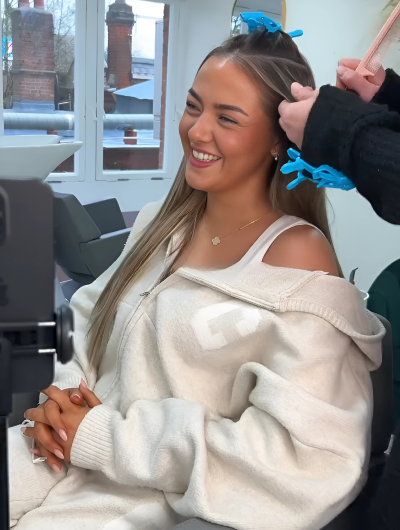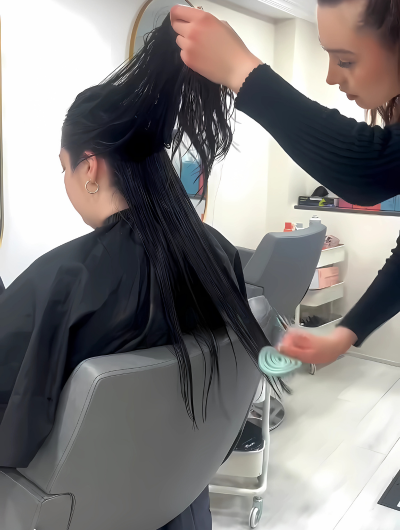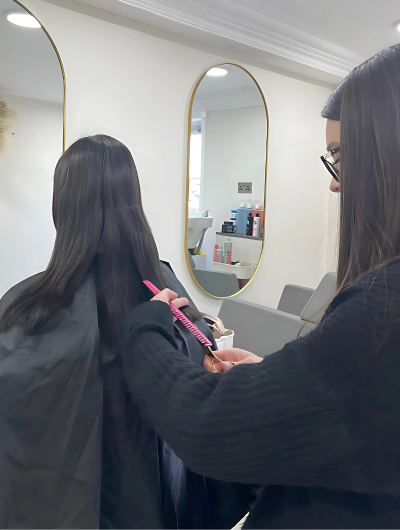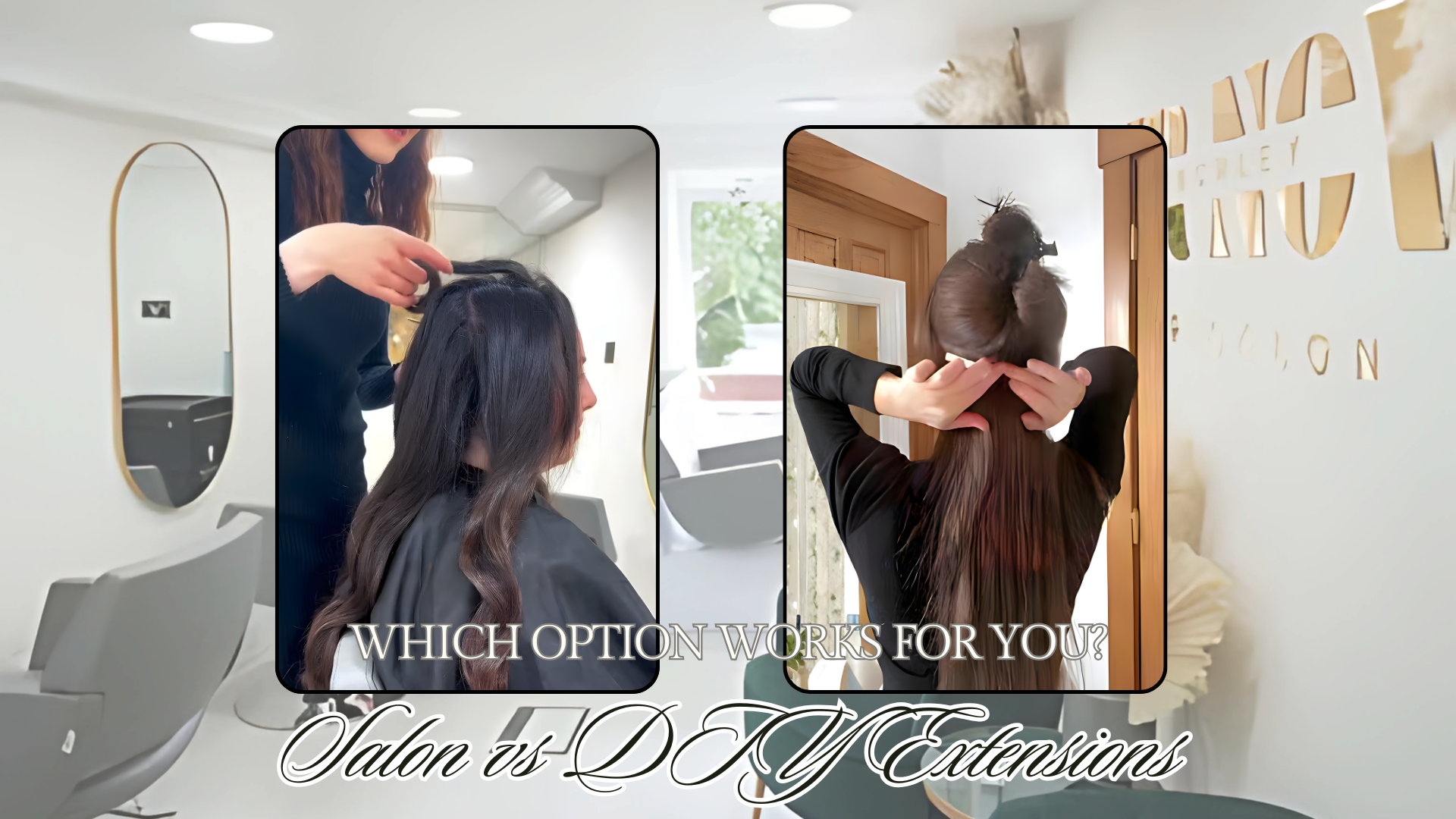Hair extensions have become a go-to solution for anyone wanting to switch up their look — whether that’s adding length, volume, or experimenting with colour without the commitment. If you’re considering getting them done professionally, visiting a Hair Extension Salon London can make all the difference in achieving a flawless, natural finish. But once you decide you want extensions, the next big question pops up: should you get them done professionally at a salon or try applying them yourself at home? It’s a fair dilemma. The choice between salon vs DIY extensions really comes down to your budget, lifestyle, skill level, and how much time you’re willing to spend on upkeep.
In this guide, we’ll break down the pros and cons of each approach, help you understand the real differences, and ultimately figure out which option is best suited for you. So, grab a cuppa — let’s dive in.
Why Hair Extensions Are So Popular
Before we weigh up salon vs DIY extensions, it’s worth understanding why extensions are such a big deal in the first place.
Hair extensions have evolved massively over the years. Gone are the days of obvious clip-ins and mismatched shades. Today’s options — from tape-ins and micro-rings to pre-bonded keratin extensions — look seamless and natural when done properly.
They’re not just about length anymore either. Many people use extensions to add volume to fine hair, try out highlights without bleaching, or even recover confidence after hair thinning or loss. Whether you’re styling for a special occasion or simply want fuller everyday locks, extensions can transform your look in minutes.
But the method you choose — professional or DIY — can make or break the results.
Salon Hair Extensions: The Professional Touch
If you’ve ever admired someone’s flawless, natural-looking extensions, chances are they were done in a salon by a trained stylist. Professional application isn’t just about putting the hair in — it’s about blending, colour-matching, and ensuring the health of your natural hair.
Let’s look at what you can expect from a salon experience.
1. Expert Application and Personalisation

When you visit a salon, your stylist assesses your natural hair type, texture, and condition before recommending a suitable method. Whether it’s tape-ins, micro rings, or keratin bonds, every type of extension requires a different technique — and precision matters.
A professional stylist knows exactly how to distribute the extensions evenly to avoid tension or damage to your roots. They’ll also ensure the length and colour blend seamlessly, so your extensions look natural and move just like real hair.
If you visit a Hair Extension Salon London, for example, your stylist will also likely use high-quality, ethically sourced hair — which means your new locks will feel softer, last longer, and style better.

2. Better Quality Products
Professional salons have access to premium-grade hair and tools that aren’t always available to the public. From Remy human hair to salon-grade adhesives and bonds, the materials used in professional application typically outperform what you can buy online for DIY use.
Stylists also work with trusted Hair Extension Suppliers, ensuring consistent quality and safe, tested products. That’s a big deal when you’re investing in something that’ll stay attached to your head for weeks or even months
3. Safe and Long-Lasting Results
One of the biggest benefits of choosing a salon is the peace of mind that your extensions are applied safely. Incorrect installation can lead to matting, slippage, or even breakage of your natural hair.
Professional stylists are trained to section hair properly, apply extensions evenly, and ensure minimal stress on your scalp. When cared for correctly, salon extensions can last anywhere between six weeks to six months, depending on the type.
And because your stylist knows exactly what they’re doing, the removal process is equally safe — no harsh pulling or damage to your natural strands.
4. Maintenance Support

Extensions don’t end with installation — they need ongoing care. With salon extensions, you get follow-up appointments for adjustments, tightening, or reapplication. Your stylist can also show you the correct way to wash, dry, and style your extensions to maintain their quality.
In short, you’re not just paying for the application; you’re investing in expertise and aftercare.

DIY Hair Extensions: Convenience at Your Fingertips
Now, on the other hand, DIY hair extensions are all about control, flexibility, and affordability. With so many at-home kits available — from clip-ins and halo extensions to tape-ins — you can easily switch up your look in minutes without leaving the house.
But is the DIY route right for you? Let’s find out.
1. Budget-Friendly Beauty
There’s no denying that salon extensions can be pricey, especially if you opt for premium human hair and professional application. DIY extensions offer a more wallet-friendly alternative.
Clip-ins and halo extensions, for example, are reusable and require zero professional installation. You can pop them in whenever you fancy longer or fuller hair — perfect for a night out, special occasion, or even daily wear if you’re careful.
If you’re experimenting for the first time or aren’t sure what look suits you best, DIY extensions are a great starting point before committing to a salon treatment.
2. Instant Transformation
DIY extensions give you full control over when and how you wear them. Want longer locks for the weekend? Fancy a fuller ponytail for brunch? You can achieve it in minutes.
Clip-In Hair Extensions and halo pieces are especially easy to apply — you don’t need glue, heat, or tools. Just section your hair, clip, blend, and go. They’re ideal for anyone who loves switching up styles frequently without long-term commitment.
3. Freedom and Flexibility
Another plus of DIY extensions is flexibility. You can remove them whenever you like — perfect if you enjoy experimenting with hairstyles or changing up your look often.
Unlike salon extensions that stay attached for months, DIY options let you give your natural hair a break when needed, reducing the risk of damage.
4. Learning Curve and Limitations
That said, applying extensions yourself isn’t always as straightforward as it looks in tutorials. Getting a seamless, natural blend takes practice — and not all DIY kits are suitable for all hair types.
For example, applying tape-ins or micro-rings at home can be risky if you don’t know the proper technique. You might place them too close to the roots, causing discomfort or damage. Or, they could slip out quickly if not secured correctly.
Even temporary clip-ins require careful sectioning and blending to look natural. So, while the DIY route can save money, it demands patience, skill, and a bit of trial and error.
Salon vs DIY Extensions: The Key Differences
Trying to decide between salon vs DIY extensions? Let’s break it down in a simple, side-by-side way so you can see what really sets them apart.
When you go to a salon, you’re paying for expertise, precision, and a professional finish. With DIY extensions, you’re in charge — which can be great if you like flexibility and saving a bit of money.
Here’s a quick comparison to help you weigh things up:
- Cost:
Salon extensions come with a higher upfront cost, but that includes professional application and quality assurance. DIY extensions, on the other hand, are much more affordable — usually a one-time purchase you can reuse. - Application Time:
A salon appointment can take anywhere from one to four hours, depending on the method. Doing it yourself? You could have clip-ins or a halo fitted in just 5 to 20 minutes. - Longevity:
Professionally applied extensions can last anywhere from six weeks to six months with the right care. DIY versions are reusable but generally don’t last as long before showing wear and tear. - Look & Finish:
Salon extensions tend to look flawless — they’re perfectly colour-matched and seamlessly blended. DIY ones can look just as good with a bit of practice, but it might take some trial and error to get there. - Maintenance:
Salon extensions usually require check-ups or tightening sessions every few weeks. DIY extensions are self-maintained, so you’ll need to stay on top of washing, brushing, and storage. - Risk Level:
When a professional applies your extensions, the risk of damage is minimal. But with DIY methods, things can go wrong if you’re not careful — especially if you use heat, glue, or tension incorrectly. - Flexibility:
Salon extensions are designed for long-term wear, perfect if you want a consistent look. DIY options, meanwhile, can be removed whenever you fancy a change, making them ideal for those who love variety.
As you can see, both routes have their perks — it really depends on what matters most to you. If you value convenience and budget, DIY might win. But if you’re after a long-lasting, salon-smooth finish, leaving it to the pros could be the smarter move.
Which Option Should You Choose?

When deciding between salon vs DIY extensions, consider the following questions:
- What’s your budget?
If you’re looking for a one-off style boost or a temporary solution, DIY extensions might suit you better. But if you want a natural, low-maintenance look that lasts, a salon application is worth the investment. - How confident are you with styling?
If you love playing with your hair and have a steady hand, DIY might be fun. But if precision isn’t your strong suit, a salon stylist can ensure your extensions look flawless. - How often do you change your look?
If you like experimenting with different hairstyles frequently, clip-ins or halos are ideal. For a consistent, everyday look that blends perfectly, salon extensions are the way to go.
Do you have time for maintenance?
Salon extensions require appointments for upkeep, while DIY versions need regular washing and careful handling. Choose what fits your schedule best.

Finding the Right Balance
Here’s a little secret: you don’t always have to choose one over the other. Many people use a mix of both.
For example, you might get semi-permanent salon extensions for everyday wear but keep a set of clip-ins handy for added volume on special occasions. This hybrid approach gives you the best of both worlds — the professional polish of salon work with the flexibility of DIY styling.
What you’re looking for
When it comes to Salon vs DIY Extensions, there’s no universal winner. It all depends on what you’re looking for.
If you want long-lasting, natural-looking results with minimal stress, go for professional salon extensions. The expertise, precision, and quality are hard to beat — plus, you’ll have peace of mind knowing your hair is in safe hands.
But if you love experimenting, want flexibility, or need a quick transformation without breaking the bank, DIY extensions can be a fantastic option — especially with the high-quality at-home kits available today.
Whichever route you choose, remember that the key to beautiful extensions lies in proper care. Always use gentle, sulphate-free products, brush regularly with a soft-bristle or loop brush, and avoid excess heat where possible.
Whether you go pro or DIY, your dream hair is within reach — it’s just about finding what works best for your lifestyle (and your budget!).
FAQ
Are salon extensions worth the money?
Yes, if you’re after a long-term, seamless, and natural finish. Salon extensions are professionally installed, last longer, and cause less damage than poorly applied DIY versions.
Can I apply tape-in extensions myself?
It’s not recommended. Tape-ins require precise sectioning and placement. If applied incorrectly, they can slip, tangle, or damage your hair. It’s safer to have them done by a professional stylist.
Are DIY clip-in extensions damaging?
Not if used correctly. Always remove clip-ins before bed, avoid tugging, and don’t wear them too tightly. When cared for properly, they’re a safe, temporary option.
How long do salon extensions last compared to DIY ones?
Salon extensions can last up to six months with proper care, while DIY extensions like clip-ins or halos typically last a few months, depending on use and maintenance.
Which type is best for beginners?
Clip-ins or halo extensions are ideal for beginners — they’re easy to apply, remove, and style without needing professional help.

